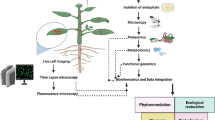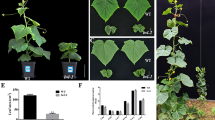Abstract
To grow on cellulose as a carbon source, Hypocrea jecorina (Trichoderma reesei) expresses and secretes a number of cellulases. This mechanism of induction by an insoluble carbon source has been controversially explained, but is most frequently attributed to the formation of the β-1,2-diglucoside sophorose, a powerful soluble inducer of cellulases, by means of transglycosylation by constitutive or conidia-bound β-glycoside hydrolases. Some recent results, however, have put the role of sophorose as the mediator of cellulose induction in question. Here we used the rapid subtraction hybridization approach to clone genes expressed by H. jecorina in the presence of cellulose but not upon incubation with sophorose. From a total of 96 expressed sequence tag (EST) fragments, 37 putative positives—representing ten different genes—were selected and analysed. All of them were present in the genome sequence of H. jecorina. Three of them encode proteins known from H. jecorina, five encode enzymes involved in secondary metabolism and one gene encodes an as yet unknown member of glycoside hydrolase family 30. Two EST fragments had no orthologues in other fungi. One of them made up for 25 of the 37 EST fragments analysed. The corresponding gene (only expressed on cellulose, ooc1) encodes a small secreted 10.5-kDa protein. The ooc1 transcript is only detectable during growth on cellulose in darkness, but not on cellulose in light or in the presence of other cellulase inducers (sophorose, lactose), nor is it formed during growth on glucose or glycerol. Its expression is strongly reduced, but not completely abolished in the cellulase non-inducible mutant QM 9978. The results of this study provide evidence that induction of gene expression by cellulose does not necessarily correlate with that by sophorose.



Similar content being viewed by others
References
Alexander NJ, McCormick SP, Hohn TM (1999) TRI12, a trichothecene efflux pump from Fusarium sporotrichioides: gene isolation and expression in yeast. Mol Gen Genet 261:977–984
Andrade AC, Van Nistelrooy JG, Peery RB, Skatrud PL, De Waard MA (2000) The role of ABC transporters from Aspergillus nidulans in protection against cytotoxic agents and in antibiotic production. Mol Gen Genet 263:966–977
Aro N, Saloheimo A, Ilmen M, and Penttila M (2001) ACEII, a novel transcriptional activator involved in regulation of cellulase and xylanase genes of Trichoderma reesei. J Biol Chem 276:24309–24314
Banka RR, Mishra S, Ghose TK (1998) Fibril formation from cellulose by a novel protein from Trichoderma reesei: a non hydrolytic cellulolytic component? World J Microbiol Biotechnol 14:551–558
Brewer D, Mason FG, Taylor A (1987) The production of alamethicins by Trichoderma spp. Can J Microbiol 33:619–625
Chambergo FS, Bonaccorsi ED, Ferreira AJ, Ramos AS, Ferreira JRJJR, Abrahao-Neto J, Farah JP, El-Dorry H (2002) Elucidation of the metabolic fate of glucose in the filamentous fungus Trichoderma reesei using expressed sequence tag (EST) analysis and cDNA microarrays. J Biol Chem 277:139831–139838
Chomczynski P, Sacchi N (1987) Single-step method of RNA isolation by acid guanidinium thiocyanate–phenol–chloroform extraction. Anal Biochem 162:156–159
Dinur T, Osiecki KM, Legler G, Gatt S, Desnick RJ, Grabowski GA (1986) Human acid β-glucosidase: isolation and amino acid sequence of a peptide containing the catalytic site. Proc Natl Acad Sci USA 83:1660–1664
Emanuelsson O, Nielsen H, Brunak S, Heijne G von (2000) Predicting subcellular localization of proteins based on their N-terminal amino acid sequence. J Mol Biol 300:1005–1016
Foreman PK, Brown D, Dankmeyer L, Dean R, Diener S, Dunn-Coleman NS, Goedegebuur F, Houfek TD, England GJ, Kelley AS, Meerman HJ, Mitchell T, Mitchinson C, Olivares HA, Teunissen PJ, Yao J, Ward M (2003) Transcriptional regulation of biomass-degrading enzymes in the filamentous fungus Trichoderma reesei. J Biol Chem 278:31988–31997
Graeme-Cook KA, Faull JL (1991) Effect of ulktraviolet-induced mutants of Trichoderma harzianum with altered production on selected pathogens in vivo. Can J Microbiol 37:659–664
Huang F, Adelman J, Jiang H, Goldstein NI, Fisher PB (1999) Differentiation induction subtraction hybridization (DISH): a strategy for cloning genes displaying differential expression during growth arrest and terminal differentiation. Gene 236:125–131
Jiang H, Kang DC, Alexandre D, Fisher PB (2000) RaSH, a rapid subtraction hybridization approach for identifying and cloning differentially expressed genes. Proc Natl Acad Sci USA 97:12684–12689
Kang DC, LaFrance R, Su ZZ, Fisher PB (1998) Reciprocal subtraction differential RNA display: an efficient and rapid procedure for isolating differentially expressed gene sequences. Proc Natl Acad Sci USA 95:13788–13793
Kelly SL, Lamb DC, Jackson CJ, Warrilow AG, Kelly DE (2003) The biodiversity of microbial cytochromes P450. Adv Microb Physiol 47:131–186
Krull H, Dintzis HL, Baker FL (1988) Microfibril generating factor from the cellulase of Trichoderma reesei. Biotechnol Bioeng 31:321–327
Kubicek CP, Penttilä ME (1998) Regulation of production of plant polysaccharide degrading enzymes by Trichoderma. In: Harman GE, Kubicek CP (eds.) Trichoderma and Gliocladium. Enzymes, biological control and commercial applications. Taylor and Francis, London, pp 49–71
Lynd LR, Weimer PJ, Zyl WH van, Pretorius IS (2002) Microbial cellulose utilization: fundamentals and biotechnology. Microbiol Mol Biol Rev 66:506–577
Mandels M, Andreotti R (1978) Problems and challenges in the cellulose to cellulase fermentation. Proc Biochem 13:6–13
Mandels M, Parrish FW, Reese ET (1962) Sophorose as an inducer of cellulose in Trichoderma viride. J Bacteriol 83:400–408
Marchler-Bauer A, Anderson JB, DeWeese-Scott C, Fedorova ND, Geer LY, He S, Hurwitz DI, Jackson JD, Jacobs AR, Lanczycki CJ, Liebert CA, Liu C, Madej T, Marchler GH, Mazumder R, Nikolskaya AN, Panchenko AR, Rao BS, Shoemaker BA, Simonyan V, Song JS, Thiessen PA, Vasudevan S, Wang Y, Yamashita RA, Yin JJ, Bryant SH (2003). CDD: a curated Entrez database of conserved domain alignments. Nucleic Acids Res 31:383–387
Margolles-Clark E, Tenkanen M, Soderlund H, Penttila M (1996) Acetyl xylan esterase from Trichoderma reesei contains an active-site serine residue and a cellulose-binding domain. Eur J Biochem 237:553–560
Nakari-Setala T, Aro N, Ilmen M, Munoz G, Kalkkinen N, Penttila M (1997) Differential expression of the vegetative and spore-bound hydrophobins of Trichoderma reesei—cloning and characterization of the hfb2 gene. Eur J Biochem 248:415–423
Nielsen H, Engelbrecht J, Brunak S, Heijne G von (1997) Identification of prokaryotic and eukaryotic signal peptides and prediction of their cleavage sites. Protein Eng 10:1–6
Proctor RH, Brown DW, Plattner RD, Desjardins AE (2003) Co-expression of 15 contiguous genes delineates a fumonisin biosynthetic gene cluster in Gibberella moniliformis. Fungal Genet Biol 38:237–249
Sambrook J, Fritsch EF, Maniatis T (1989) Molecular cloning: a laboratory manual. Cold Spring Harbor Laboratory, Cold Spring Harbor, N.Y.
Schmoll M, Kubicek CP (2003) Regulation of Trichoderma cellulase formation: lessons in molecular biology from an industrial fungus. A review. Acta Microbiol Immunol Hung 50:125–145
Schmoll M, Zeilinger S, Mach RL, Kubicek CP (2004) Cloning of genes expressed early during cellulase induction in Hypocrea jecorina by a rapid subtraction hybridization approach. Fungal Genet Biol 41:877–887
Schmoll M, Franchi L, Kubicek CP (2005) The Hypocrea jecorina PAS/LOV domain protein ENVOY renders cellulase gene expression light-dependent. (submitted for publication)
Srebotnik E, Messner K (1994) A simple method that uses differential staining and light microscopy to assess the selectivity of wood delignification by white rot fungi. Appl Environ Microbiol 60:1383–1386
Sternberg D, Mandels GR (1979) Induction of cellulolytic enzymes in Trichoderma reesei by sophorose. J Bacteriol 139:761–769
Thykaer J, Nielsen J (2003) Metabolic engineering of beta-lactam production. Metab Eng 5:56–69
Torigoi E, Henrique-Silva F, Escobar-Vera J, Carle-Urioste JC, Crivellaro O, El-Dorry H, El-Gogary S (1996) Mutants of Trichoderma reesei are defective in cellulose induction, but not basal expression of cellulase-encoding genes. Gene 173:199–203
Tudzynski B (2004) Gibberellin biosynthesis in fungi: genes, enzymes, evolution, and impact on biotechnology. Appl Microbiol Biotechnol (e-pub ahead of print)
Tusnady GE, Simon I (1998) Principles governing amino acid composition of integral membrane proteins: application to topology prediction. J Mol Biol 283:489–506
Tusnady GE, Simon I (2001) The HMMTOP transmembrane topology prediction server. Bioinformatics 17:849–850
Vaheri MP, Leisola M, Kaupinnen V (1979) Transglycosylation products of the cellulase system of Trichoderma reesei. Biotechnol Lett 1:41–46
Wang W, Liu J, Chen G, Zhang J, Gao P (2003) Function of a low molecular weight peptide from Trichoderma pseudokoningii S38 during cellulose biodegradation. Curr Microbiol 46:371–379
Wuchiyama J, Kimura M, Yamaguchi I (2002) A trichothecene efflux pump encoded by Tri102 in the biosynthesis gene cluster of Fusarium graminearum. J Antibiot (Tokyo) 53:196–200
Yabe K, Nakajima H (2004) Enzyme reactions and genes in aflatoxin biosynthesis. Appl Microbiol Biotechnol 64:745–755
Yanisch-Perron C, Vieira J, Messing J (1985) Improved M13 phage cloning vectors and host strains: nucleotide sequences of the M13mp18 and pUC19 vectors. Gene 33:103–119
Zeilinger S, Haller M, Mach RL, Kubicek CP (2000) Molecular characterization of a cellulase-negative mutant of Hypocrea jecorina. Biochem Biophys Res Commun 277:581–588
Zeilinger S, Schmoll M, Pail M, Mach RL, Kubicek CP (2003) Nucleosome transactions on the Hypocrea jecorina (Trichoderma reesei) cellulase promoter cbh2 associated with cellulase induction. Mol Genet Genomics 270:46–55
Acknowledgements
This work was supported by a grant from the Austrian Science Foundation (FWF P-17325) to C.P.K. The H. jecorina/T. reesei genome sequencing project was funded by the United States Department of Energy.
Author information
Authors and Affiliations
Corresponding author
Additional information
Communicated by U. Kück
Rights and permissions
About this article
Cite this article
Schmoll, M., Kubicek, C.P. ooc1, a unique gene expressed only during growth of Hypocrea jecorina (anamorph: Trichoderma reesei) on cellulose. Curr Genet 48, 126–133 (2005). https://doi.org/10.1007/s00294-005-0585-1
Received:
Revised:
Accepted:
Published:
Issue Date:
DOI: https://doi.org/10.1007/s00294-005-0585-1




